Cycling can be a great way to get some quality alone time, but it’s also a brilliant opportunity to spend time with your family.
In this guide, we take a look at the best ways to get children onto two wheels and riding safely and confidently, from non-pedalling passengers to independent riders.
How to cycle with your kids
Step 1: Get your partner on a bike too
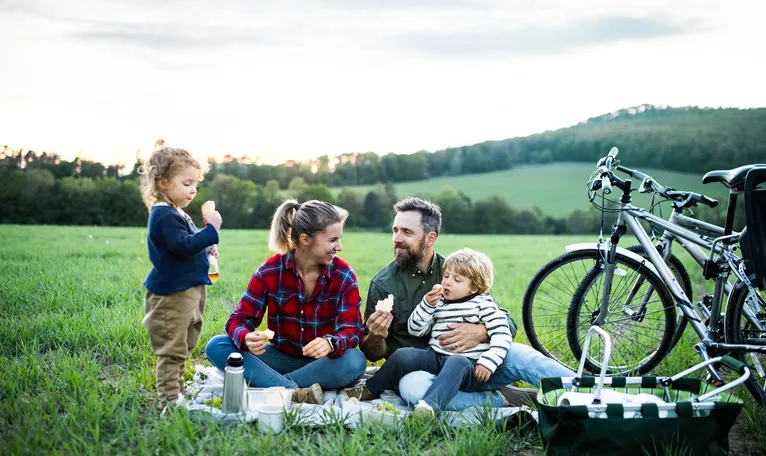
Family cycling isn’t only about teaching your children how to cycle. Often, it’s a time when a non-cycling partner also starts riding again.
First things first: make sure you both have good bikes in working order. If you're buying a new bike, check out our in-depth guide on how to choose the best bike for you.
New isn't the only option, of course – the second-hand bike market can be a great way to pick up a bargain, but read our guide on tips for buying a used bike to make sure you avoid common pitfalls.

It's a good idea to perform a quick safety check on a bike if it hasn't been ridden in some time. This will help keep all the bikes in the household running sweetly, and ensure if there are any surprise issues, such as a mid-ride puncture, everyone is equipped to deal with it.
Let the newer cyclist set the pace and mileage, and you can also level the playing field by fitting any bike trailers, child seats or luggage to the bike of the more experienced or stronger cyclist for the bulk of the ride.
It’s also worth avoiding busy roads, which can be intimidating for new cyclists and children, and aren’t conducive to conversation while you ride. Our guide on how to find to find quiet cycling routes will be you on the right track.
Keep mileage low, especially for the first few outings, and take plenty of snacks and drinks. Younger children won’t need much entertaining, but they’ll want to stretch their legs, so aim for somewhere with a bit of grass or a play area.
Step 2: Get the right kit
Having the right kit will make the whole experience safer, more comfortable and, therefore, more fun for everyone.
You may need some specialist equipment such as a bike seat or tow-along, but you don't need to fork out for loads of special kids' bike clothing – unless you want to, of course!
How to buy a kid's helmet
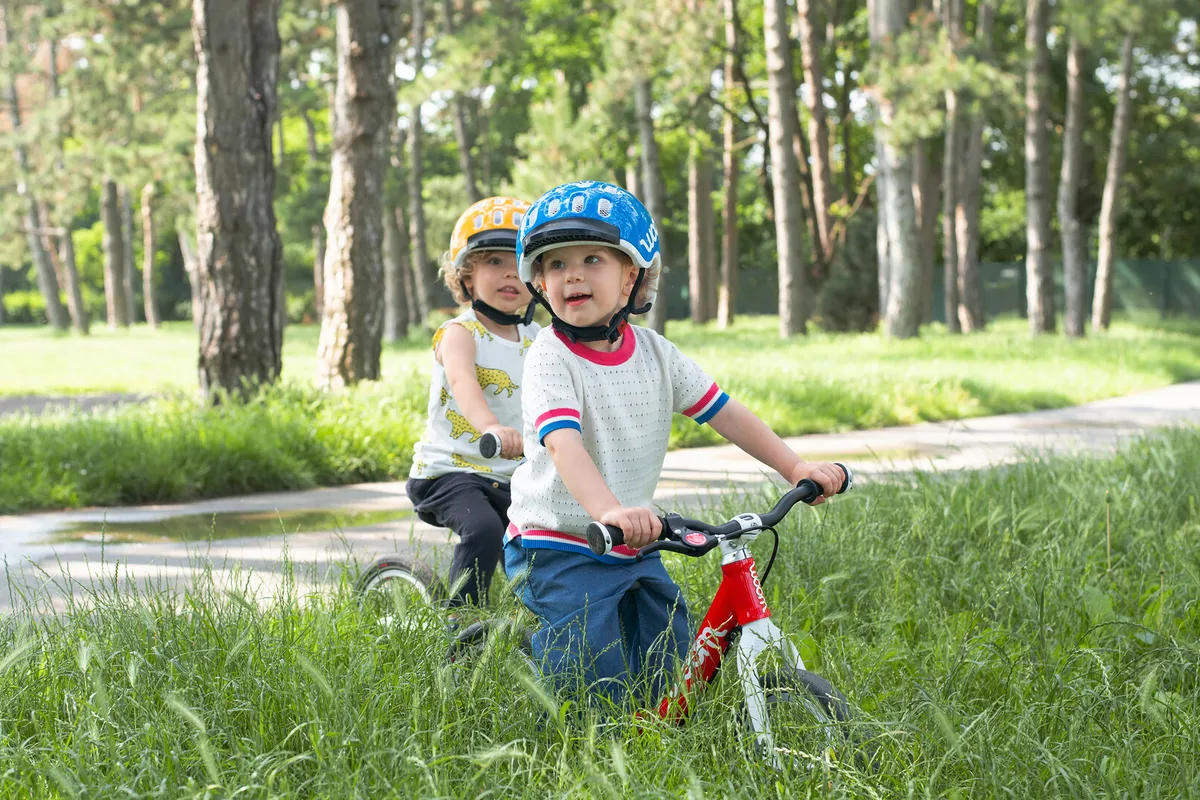
Helmets are like shoes – the most important criteria for a helmet is getting a good fit. When choosing a bike helmet for a child, rather than looking for a specific model, visit your local bike shop and choose one that sits snugly on their head.
In the UK, it should be EN 1080 European Standard approved, which covers helmet safety for children. In the US, it must comply with the United States Consumer Product Safety Commission. In Australia, the helmet must fit its own mandatory standard.
Ventilation isn’t very important though, especially for child passengers, who don’t generate much heat.
Make sure it’s worn properly, with the forehead protected. Avoid over-tight straps or nipping your child’s neck with the clasp by sliding a finger behind the chin-strap when fastening it.
Summer cycling clothes for kids
Avoid sunburn by liberally applying sunblock and/or choosing light clothing with arm and leg coverage. The back of the neck is very vulnerable for children in child seats.
Dress your child with an extra layer of clothing because they won’t get as hot as you.
Winter wear

Children can and do get very cold when cycling in winter, even in trailers. Wrap them up really well.
Ski-style salopettes make great over-trousers, and a balaclava under the helmet (remove some padding) will prevent painfully cold ears.
Wellington boots are useful even in trailers, which may collect water in the footwell.
Kickstand

It can be difficult to get a child into or out of a child seat or trailer by yourself, so a strong kickstand, such as the Pletscher twin leg, can help. But never leave a child unattended in a child seat, even with a kickstand.
Step 3: Pre-school riding
Up until the age of four or five, small children are usually non-pedalling passengers. Fortunately, they’re fairly portable – with the right equipment.
The most popular choices are child seats and trailers, though the best electric cargo bikes are popular picks for the school and grocery run.
Bike trailers
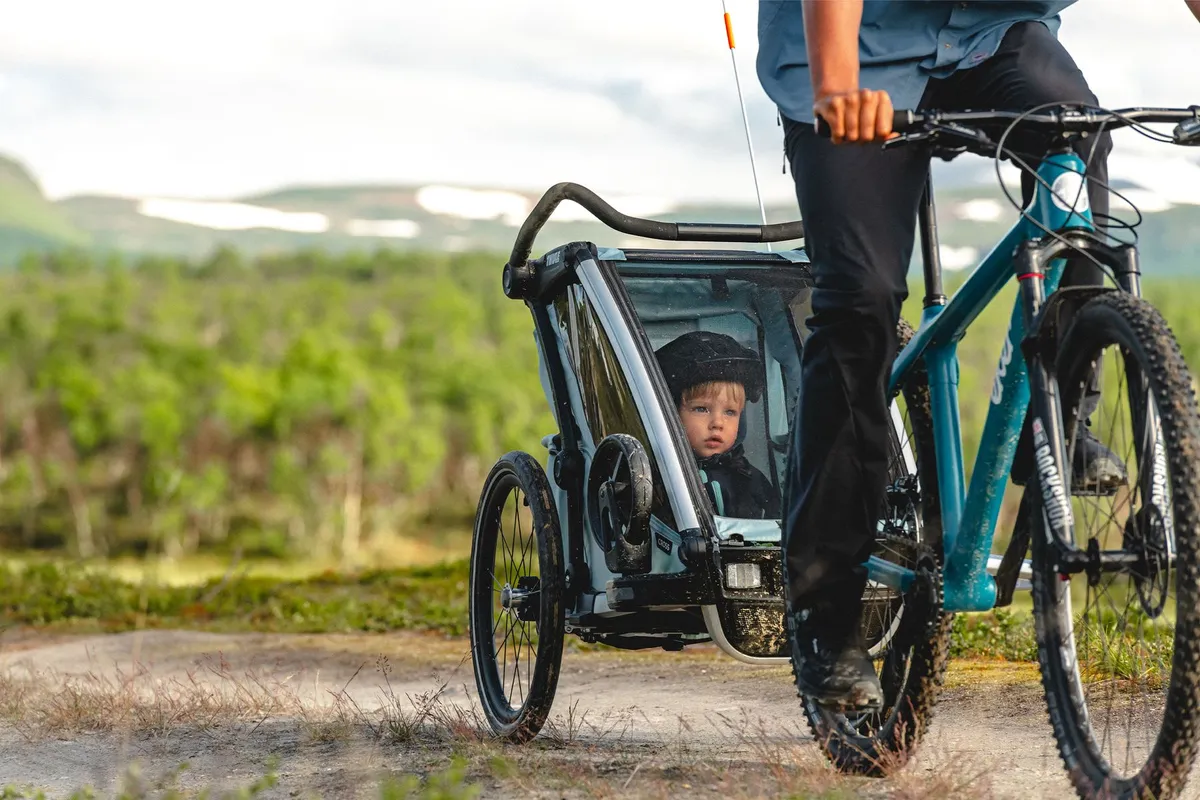
Bike trailers are usually two- or three-wheeled trailers that will seat one or two children, and can be attached to the rear of the bike to be pulled along behind it.
They will have a roll cage and covers that protect the passengers inside from weather, grit from the road and insects. Many often work as joggers and strollers in addition to trailers.
There are a few advantages over a child seat, including greater carrying capacity with room for nappies, groceries, toys and so on, as well as better bike handling for you.
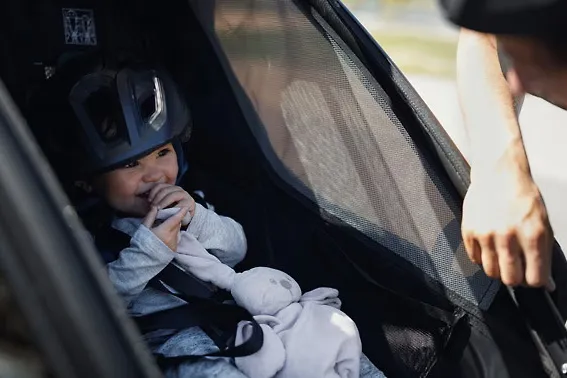
They are wider and more visible than child seats too, which encourages drivers to give you room.
Another advantage of a trailer is that you may be able to fit a small balance bike in the storage space. This way, if your little one wants to ride for a bit they can, then jump back in the trailer when they get tired.
Trailers are also very stable; if you happen to fall, the trailer should remain upright, and even if it does topple over the children are protected by the aforementioned roll cage. Also, while trailers may look bulky, most trailers fold flat for storage at home.
Children's bike seats
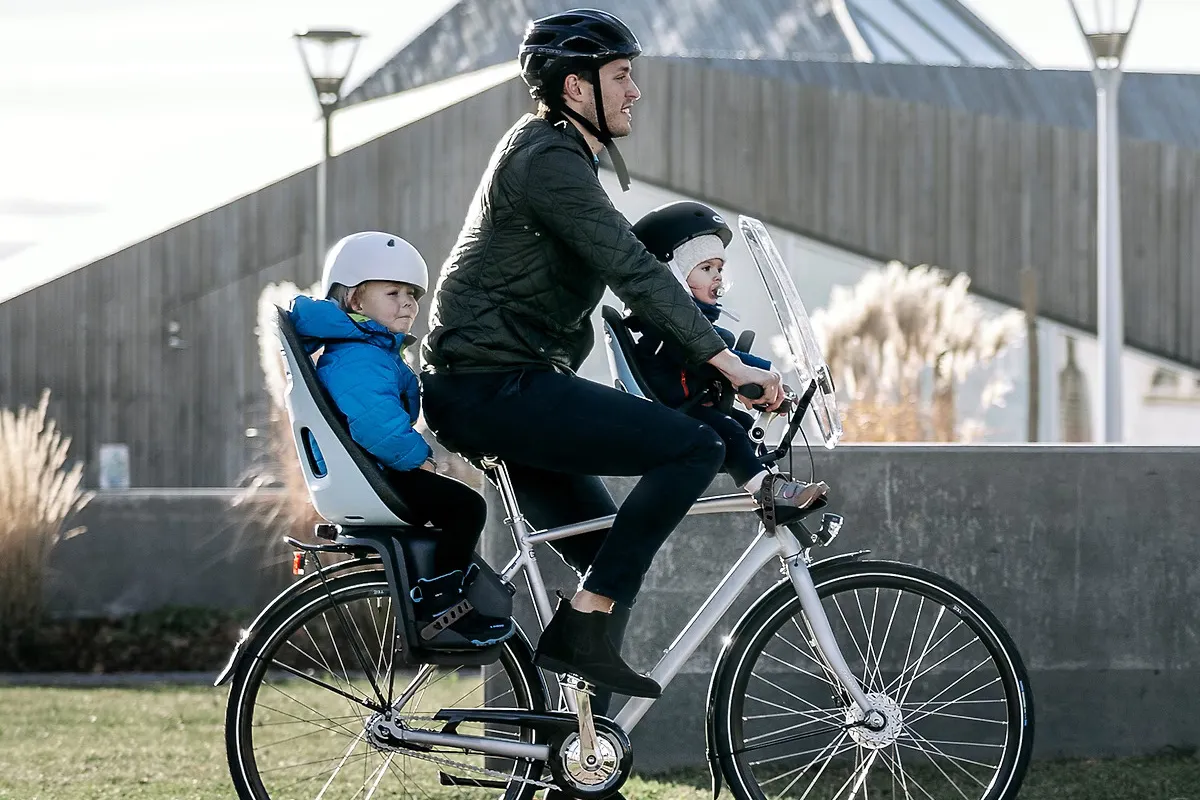
Most children's bike seats fit on the back of a bike, using an attachment system similar to a rear pannier or luggage rack, or attaching via a mount fitted to the down tube.
You can also get front-mounted child seats that usually sit on the top tube between the saddle and the handlebar.
For the majority of child seats, you’ll need to ensure the bike you plan to use has the right mounts on the frame. Child seats are cheaper than trailers and require less leg and lung power. They’re great for outings in better weather, and most suit children from nine months to three or four years. A weight limit of 18 to 20kg is usual.
After fitting the seat, accustom yourself to the bike’s compromised handling by taking a trial run with a big sack of potatoes or similar.
Also practise getting your leg over the top tube without swinging it over the saddle, or you may accidentally kick your passenger.
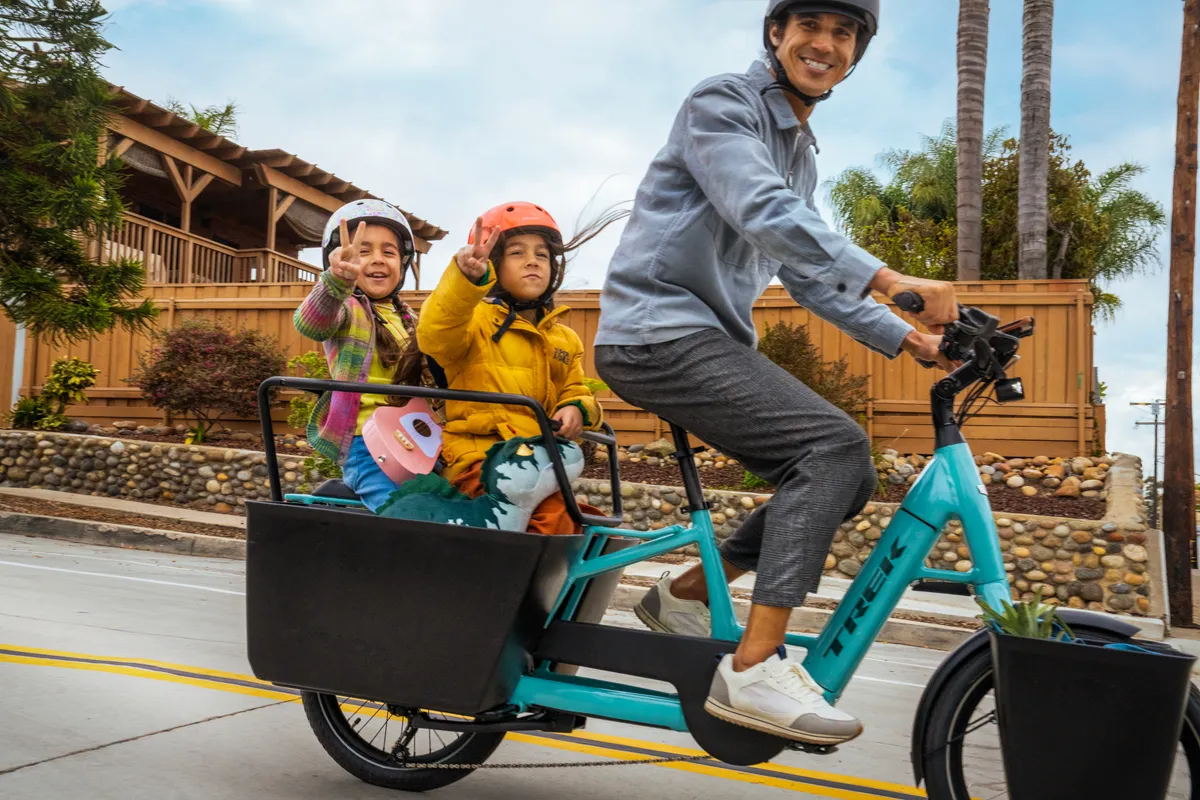
Front seats affect the handling less than rear seats, but force you to ride bow-legged – okay for a mile or two, irritating beyond.
When fitting, ensure the back of the seat is above or in front of the rear axle. Weight further back can ruin handling. You get better control with a wide bar – flat or riser.
Safety note: It’s vital that nothing – wayward clothing, feet, fingers – ends up in a wheel. All trailers have side panels to prevent this, and most seats have foot straps and side panels.
Dangling laces, scarves or mittens-on-strings can still be a risk. Make sure, too, that you periodically check all your family cycling equipment for loose screws, bolts and so on.
Balance bikes

Balance bikes are an increasingly popular way to teach children how to cycle. They are brilliant for giving children the feel of riding a bike without the complication of gears and pedals.
Teaching your child how to ride a balance bike usually makes the transition to riding a bike with pedals quicker than learning on a bike with pedals and stabilisers, then removing the stabilisers later.
However, bear in mind that kids won’t be able to cover a lot of ground on a balance bike, so these are best for either local jaunts or rides where you’ll be able to carry the child and store the balance bike when they get tired. Or bored.
Step 4: Ready to ride
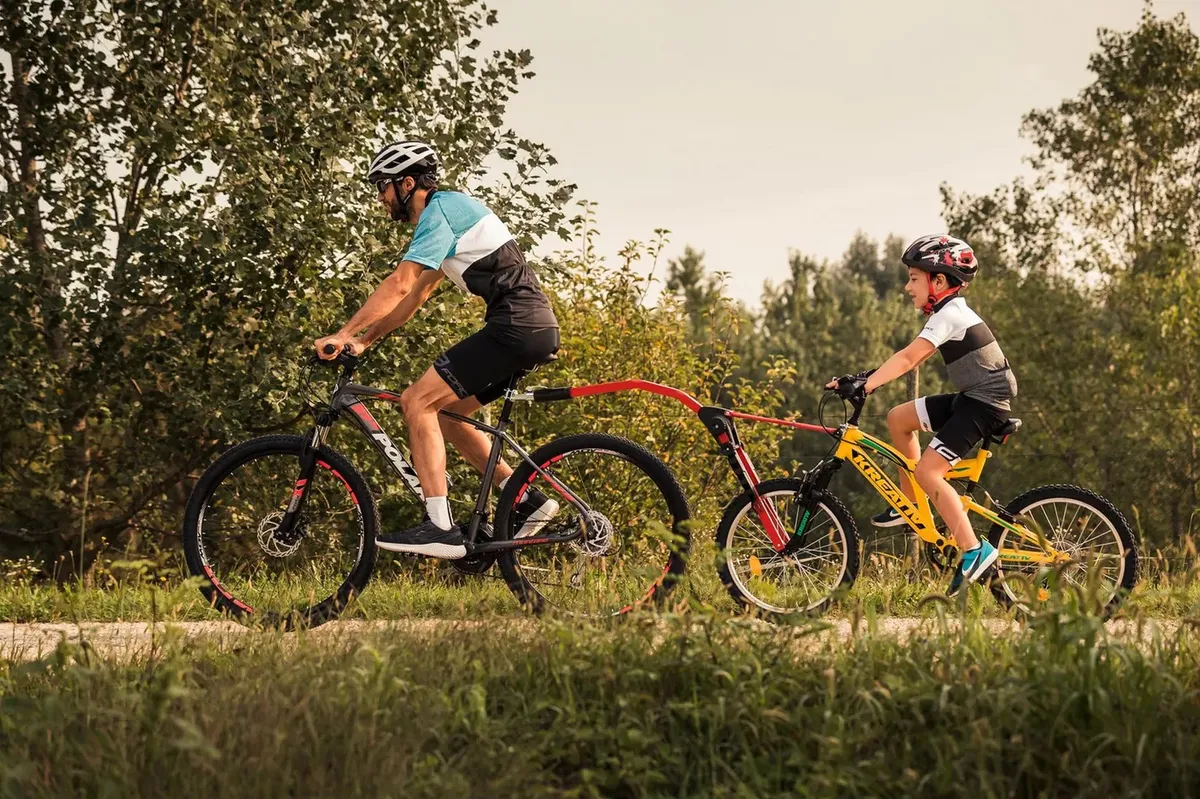
By the time they start school, most children will be capable of riding a bike of their own, but not far and not on busy roads. There are other ways to get them pedalling, though.
A trailer bike (or tagalong), which is half a bike plus a towing arm, is the cheapest solution, and many fold for storage. Most suit children from four to nine years. The upper limit is weight: your trailer bike passenger shouldn’t exceed half your bodyweight.
You can also get towing arms that fit to the front of a child’s bike and hold the front wheel off the ground, working in effect like a trailer bike.
The advantage here is that you can use them to ride to a destination such as a park, then detach and allow the child to ride free.
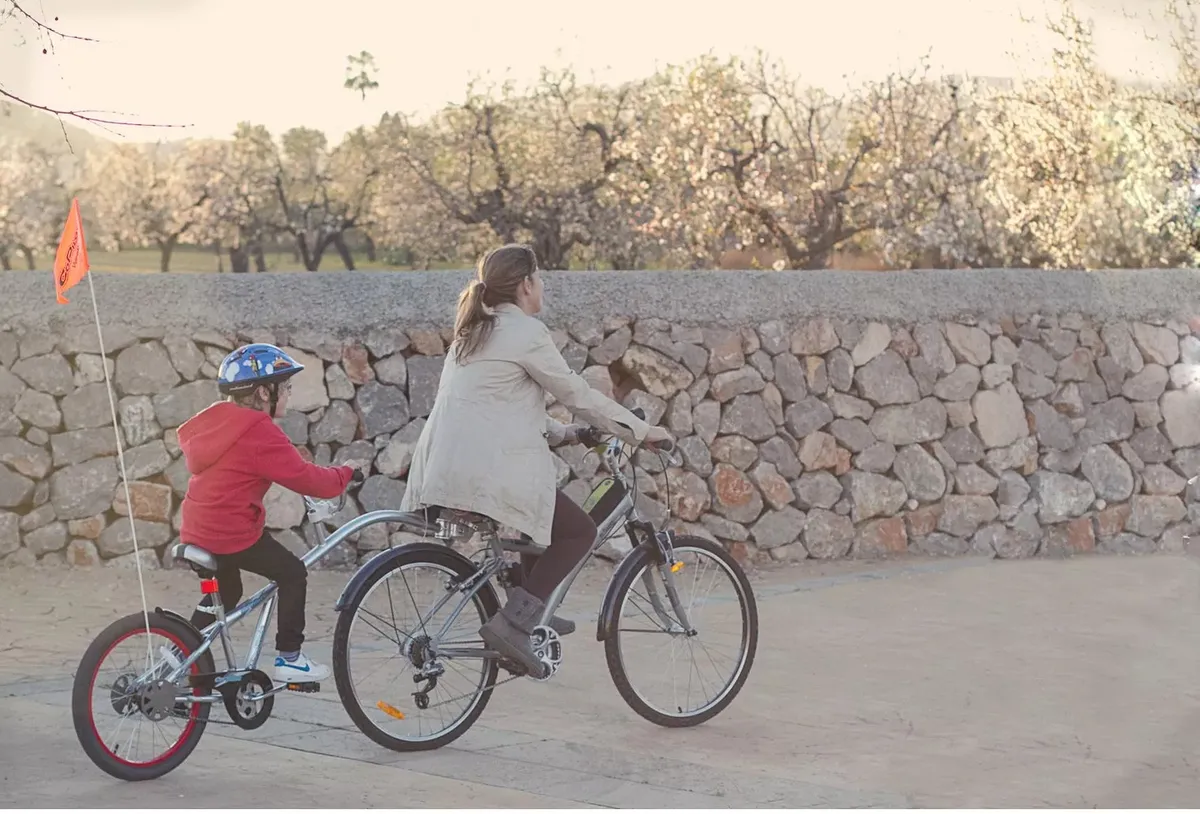
When riding with a trailer bike, fit a mudguard to the ‘down tube’ of the trailer bike, up near the handlebar, because your passenger’s face is in the line of spray from your back wheel.
Also, use mudguards on the towing bike and get two racks or hitches so you can swap the trailer bike between towing bikes.
If riding at night, you must fit a rear light and reflector to the trailer bike because it will obscure those of the towing bike.
Because your child is under your direct control, you can ride anywhere. Busy roads aren’t any more dangerous, although conversation will be impossible, so quieter lanes are better, while off-road singletrack, bridleways and forest tracks are all possible.
On longer rides, you need to check the trailer biker’s morale and energy levels regularly, and, if necessary, boost both with stops and snacks. Adults can feel themselves getting tired, while children can tire in moments and suddenly be upset and tearful – or fast asleep!
Step 5: Independent cycling
Children as young as six can ride a dozen miles, and by the age of 10 or 11 most are keen to use their own bikes.
Independent cycling offers a sense of freedom and achievement. The snag can be finding a suitable bike.
Finding the right child's bike
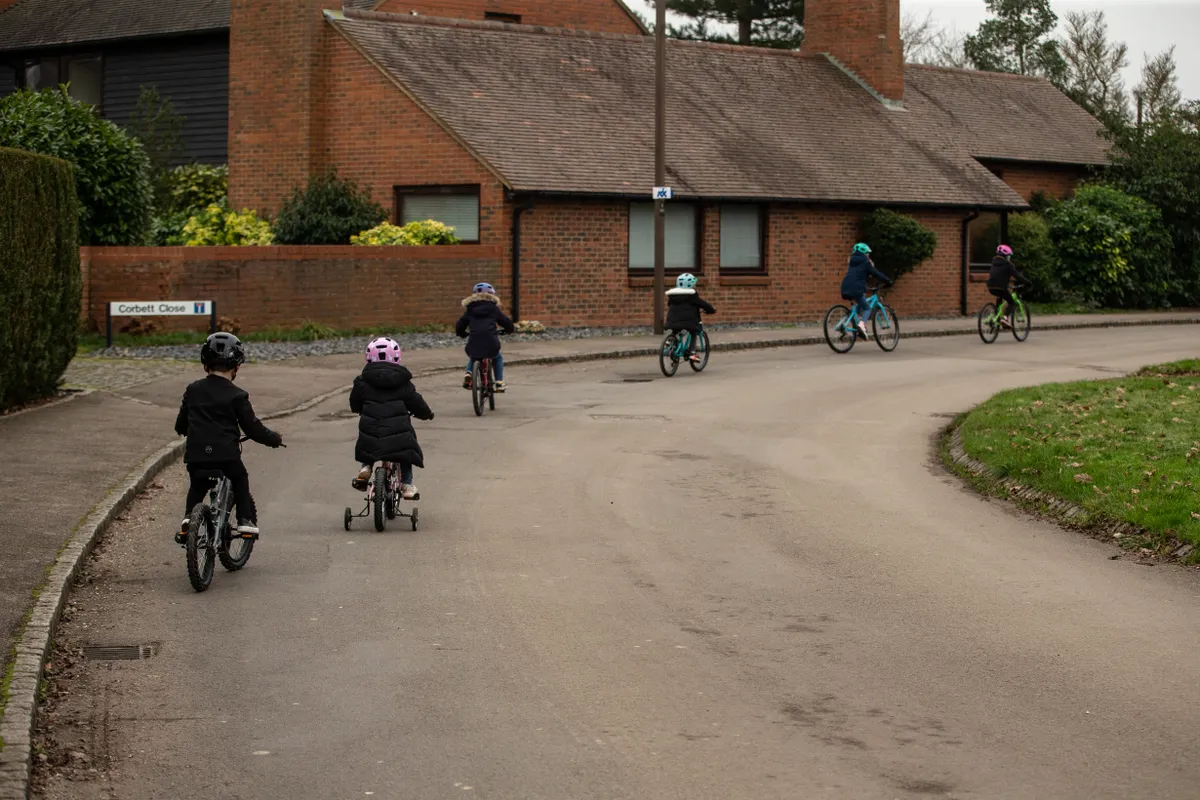
Finding the best kid's bike for your child is important. A lot of lower-priced children’s bikes are under-specced and overweight; 15kg is typical, which can be half the rider’s bodyweight.
Your child will get more enjoyment out of cycling – and more miles – with a lighter bike. As a rough guide, aim for 13kg or less for 20in- and 24in-wheel bikes, especially if they’re likely to go off-road.
Don’t be tempted to buy a bike for your child to ‘grow into’. An over-large bike will be awkward to ride.
As a rule of thumb, 14in- or 16in-wheeled bikes suit ages four to six, 20in-wheeled bikes ages five to 10, and 24in-wheeled bikes ages eight to 12.
A long seatpost and a steerer with plenty of spacers, or a quill stem, will maximise growing room. Children often prefer a seat height that’s lower than optimum, and must be able to stand over the bike and dab a foot when seated. Also, smaller hands need to be able to reach the brakes.
The number of gears on a bike can be a badge of status among children (and adults!), but too many gears can cause mechanical complications. One gear is best for starter bikes, a 3-speed hub for second bikes, and a 7-speed or 8-speed derailleur for pre-teens.
Teaching your child to cycle
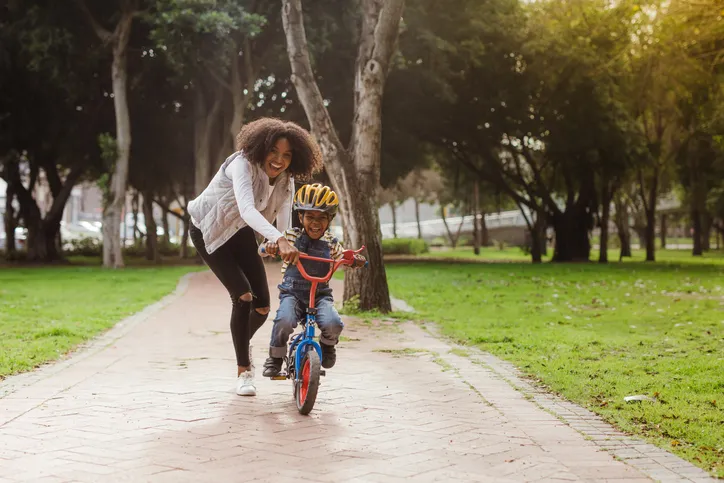
Sooner or later, your child will fall off, but off-road falls at this age are rarely serious because there’s no traffic or street furniture to hit, and speeds are generally low.
As mentioned above, a helmet is an obvious precaution, and cycling mitts can help prevent scuffed hands.
Long trousers, such as tracksuit bottoms, and shirts with sleeves are better than bare arms and legs. They offer protection from minor grazes, scratches and nettle stings. Boots or sturdy trainers are better than sandals or plimsolls for the same reason.
Some clothing companies do offer cycling kit in child sizes.
As always, plan the ride so you’re going to places that will interest the children – a cafe stop here, a good place for trying to do jumps there, whatever interests them.
Don’t overestimate your speed when planning the route. If they’re on their own bikes, you may be averaging only 5mph or so off-road.
Above all, relax! This should be an enjoyable experience for everyone. Hopefully, you’ll be cultivating a lifelong love of cycling in your kids.
